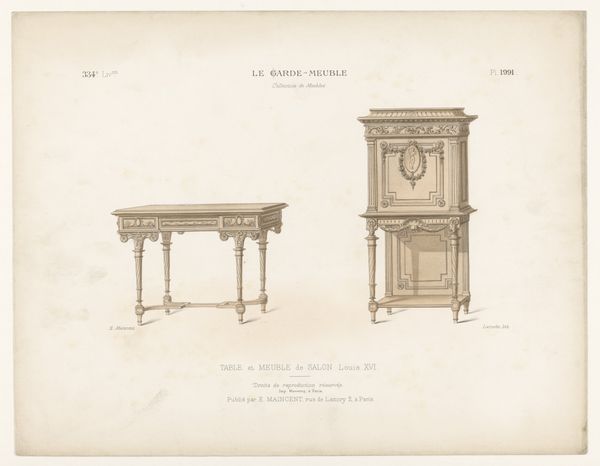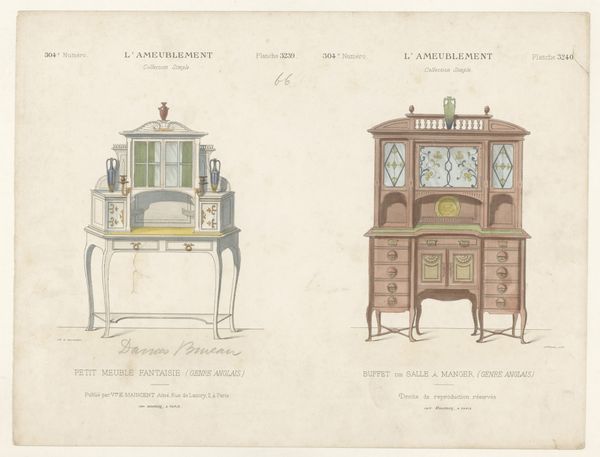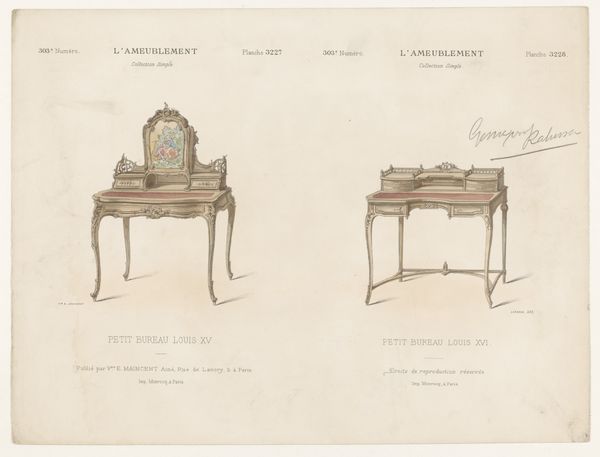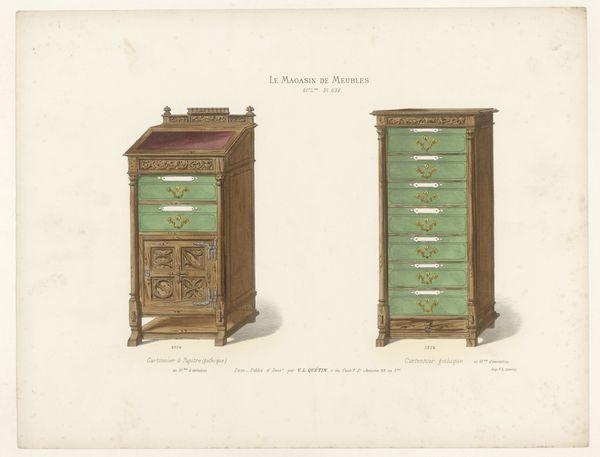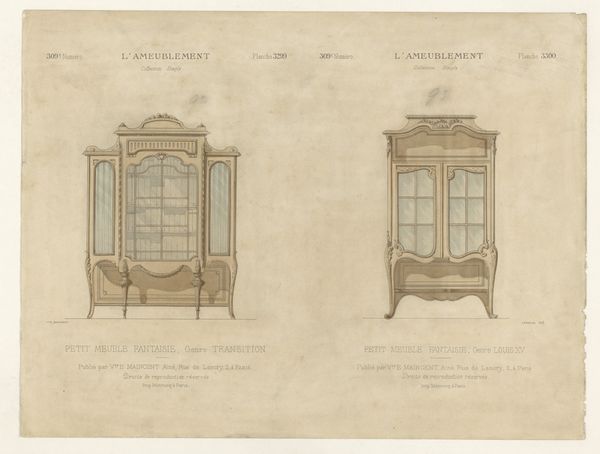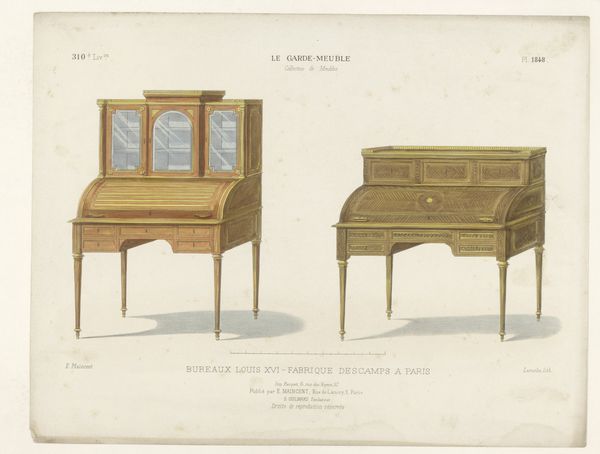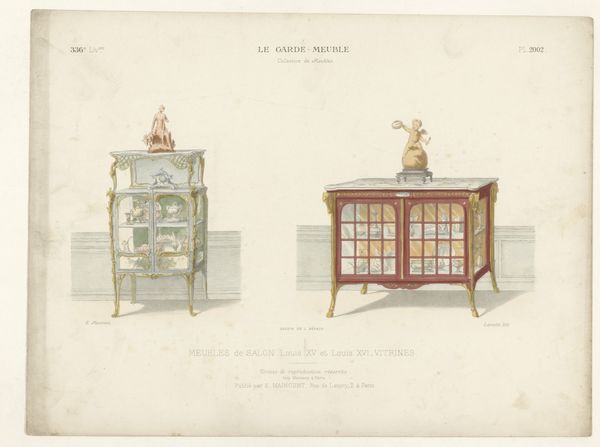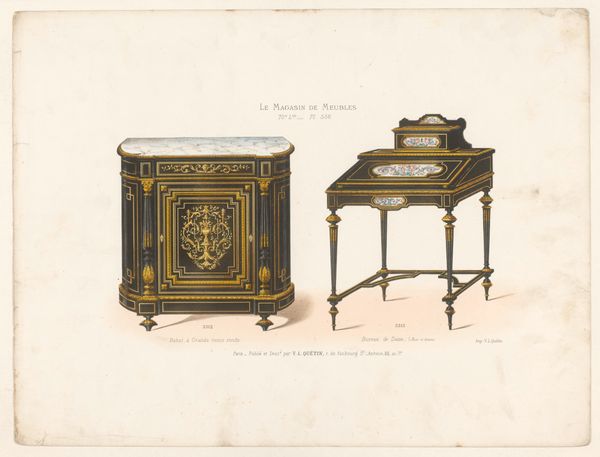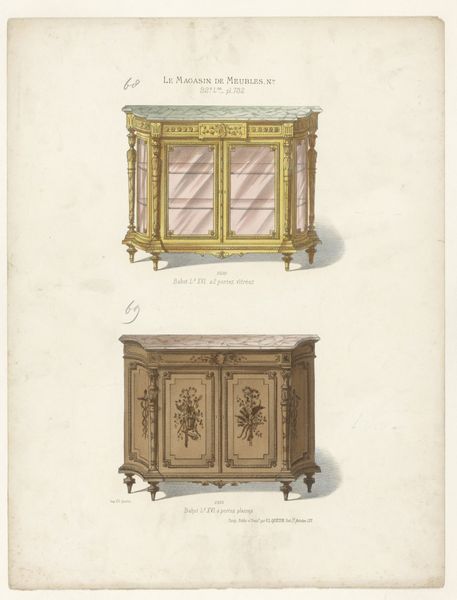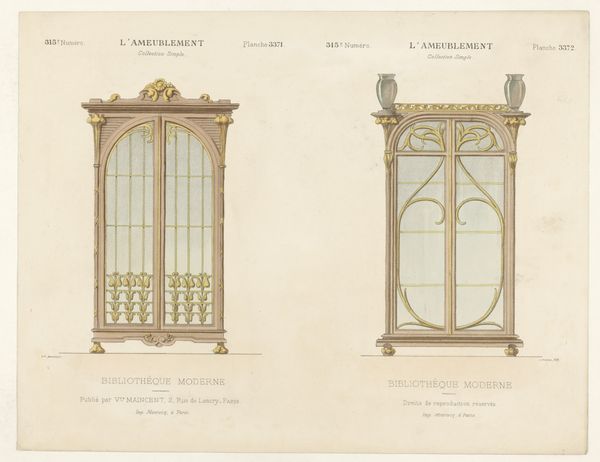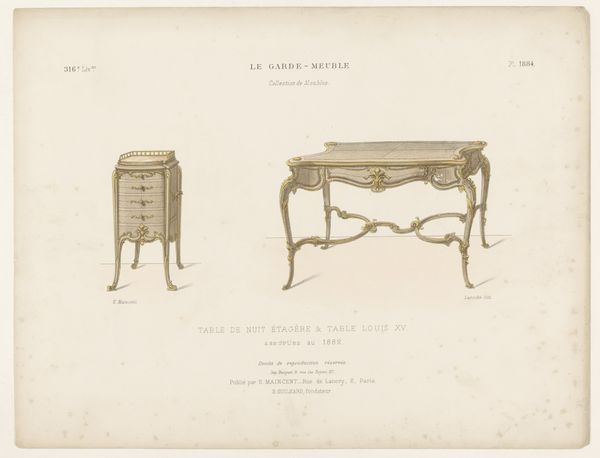
drawing, print, watercolor
#
drawing
# print
#
watercolor
#
watercolour illustration
#
decorative-art
#
watercolor
Dimensions: height 273 mm, width 360 mm
Copyright: Rijks Museum: Open Domain
Curator: Here we have "Twee bureaus" – Two Desks – an 1895 watercolor drawing and print by Léon Laroche. Two strikingly similar yet distinct desk designs face us. Editor: My initial reaction is of poised elegance and meticulous detail; the colour palette evokes serenity, don’t you think? The gentle shading makes them look like phantom thoughts about desks, rather than actual, functional objects. Curator: Indeed. It's interesting to consider these renderings within the context of late 19th-century decorative arts. Mass production was altering furniture design, so presentation became key. This print was likely intended to illustrate options in an interior design catalogue or advertisement. These bureaus offered access to the styles of past royalty and powerful elite of Europe’s past. Editor: Focusing on form, notice the contrast between the geometric rigour and that restrained ornamentation. These details direct the eye around the structures—a carefully orchestrated visual dance that offers multiple readings. We observe, for instance, a dialogue between verticality and horizontality; notice also the careful counter positioning of each element within the desk frame. Curator: Precisely. It's not just about presenting furniture. The publication information implies a larger network of producers, distributors and consumers operating in Parisian decorative art trades. One has to wonder who was targeted in their marketing practices. This image offers a glimpse into both aesthetic and business strategies. Editor: Considering it merely as lines, planes and surfaces yields much value, too. Observe how space is activated, how our gazes are engaged via tonal transitions; then consider line quality… Laroche displays a virtuoso grasp. Curator: A convincing argument indeed, in examining it structurally you remind me that these weren’t mere furniture pieces. The image itself suggests aspiration, embodying specific ideals of status and historical association during a period of considerable social transformation. Editor: So, from form to meaning, we each discover nuanced insights by looking deeper. Curator: Absolutely. An object lesson perhaps on seeing with new eyes in fresh light.
Comments
No comments
Be the first to comment and join the conversation on the ultimate creative platform.

